By Jeffrey A. Rendall, Images courtesy of Callaway Golf
CARLSBAD, CA – “Distance was the main goal with the RAZR Fit Xtreme,” remarked Callaway Golf’s Senior Director, Global Woods and Irons, Luke Williams, when asked about his company’s hopes for the driver that’s been a real force on Tour as well as at the pro shop sales counter.
You could see Williams’ words as an overstated answer, but why beat around the bush?
Williams continues, “We accomplished this not in a singular way, but through various technologies and design elements. For example, CG position is very influential in determining the spin rate of the golf ball at launch – both backspin and sidespin components. A low center of gravity, which was a focus for this driver, has the effect of lowering the backspin rate of the ball.”
Ask a golf manufacturer about a driver, and they invariably talk about spin. That’s the invisible core of the issue for most golfers, whose swings tend to produce more than the ideal amount of spin. Modern golf ball constructions and surface aerodynamics mean that Tour pros (with high head speeds) will aim for around 2200rpm of backspin to maximize distance without giving up control.
The problem then turns to trying to design a driver that will get amateurs under 3000rpm without sacrificing launch angle. In the RAZR Fit Xtreme (RFX) driver, Callaway reduced backspin by 200-300rpm compared to the original Razr Fit driver – and this contributes to the overall distance gain.
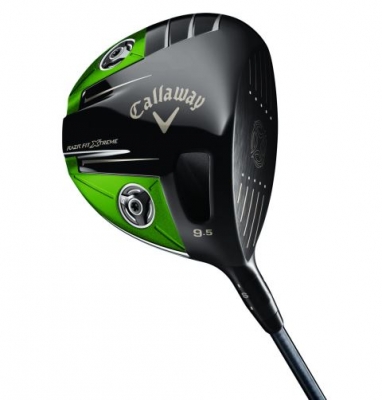 |
The RFX first gained notoriety after Phil Mickelson glowed about at after winning in Phoenix earlier this year, and other Callaway Tour staffers have been just as impressed.
Ditto for everyday players, who enjoy the fact that the RFX is adjustable, which according to Williams, is a benefit -- but not the club’s major selling point.
“Extensive research uncovered that many golfers adjust their clubs when they initially test it, or maybe a couple of times after they purchase the club, but then very few adjust it again after that,” he said.
“We certainly took that finding into account with the RAZR Fit Xtreme driver, for example, in that we refused to sacrifice any performance while adding the benefits of adjustability. (Implementing the lightweight Forged Composite in the crown of the club head is a key element of uncompromised driver performance.) This way, if a golfer makes an adjustment during his first range session with the driver and then never again, he or she still has the best performing driver in the bag.”
“We also designed RFX to offer adjustability that matters. What we mean by that is, when a golfer makes an adjustment to the club, he or she will visually notice a difference in the ball flight. We’ve found that when there are a lot of complex adjustments available, golfers don’t see a difference in the ball flight from one adjustment to the other, and therefore don’t recognize as clearly the value adjustability can offer,” Williams added.
The company has found that golfers enjoy being part of the journey to find the best driver configuration for their game. It’s more than just excessive tinkering.
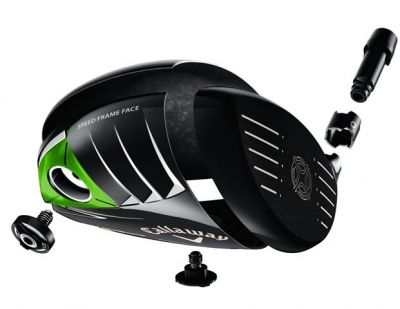 |
But with so many driver options to choose from, why single out the RFX?
Again, distance. Unlike many other adjustable drivers on the market, Callaway actually changes a lot of the club’s parameters through the loft range as loft increases from 8.5 degrees to the 13HT.
Some of the variables include: Head size, CG (center-of-gravity) position depth and height, bulge radius of the face, and face angle. As the different parameters are included, each loft is optimized to the target player for that loft, based on fitting bay data from thousands of golfers.
Why does this matter? Again, Williams explains: “This is very different to and much more optimal than, for example, those companies offering a single head which can be adjusted to a variety of lofts. We did this in RAZR Fit Xtreme and all of our 2013 drivers, even the recently introduced FT Optiforce driver (which has two head models: a 440cc and a 460cc).”
It’s a little customization even within the adjustable range. Callaway has always been an innovator, and it’s a difference you can actually see.
We found the club to be easily adjustable, dialing in some extra loft and choosing a draw bias (through adjusting the hosel and movable weights). While we didn’t notice a great deal of difference in the trajectory (to our untrained eyes), we did note how the draw bias took away any hint of fade/slice. Be careful what you ask for – and be mindful that you may be more likely to pull the ball off the tee.
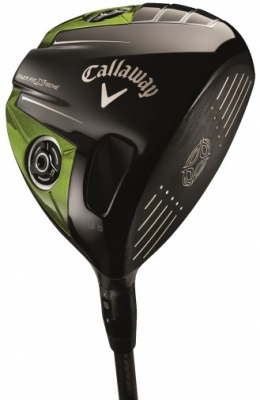 |
Williams admits the RFX is well suited for better players due to the low CG and low-spin launch characteristics, but they've worked hard to make the driver high-performing from all over the face -- so it will be forgiving for all levels of players.
The RFX’s Speed Frame Face Technology delivers high ball speeds from a very large percentage of the total face area. Since most golfers do not regularly find the center of the face, and even Tour pros, while more consistent, often gravitate to a point which is not quite the center of the face – this attribute is needed to maintain consistency. And distance.
But the driver was also designed for better players to work the ball and dial in their preferred trajectory.
With such adjustability built-in, you would expect that the shaft would play a lesser role. Not true, according to Williams. “An adjustable head does not eliminate the benefits of using the shaft that's right for you. The shaft is the delivery mechanism, so making sure that it is optimized for your swing is key. The driver's adjustability impacts launch conditions, trajectory, etc, but those performance characteristics are separate from the delivery mechanism, the shaft.”
With the high-technology aspect included in all of today’s high-end equipment, you’re only cheating yourself out of value if you fail to get the right shaft. That’s where fitting is essential.
This notion was seconded by an aspiring young pro player who caddied for our group at a recent visit to a prestigious club in California. He was familiar with Callaway drivers and confirmed that the shaft was key to top performance. He then proceeded to hit the RFX driver about 360 yards in a one-drive demonstration.
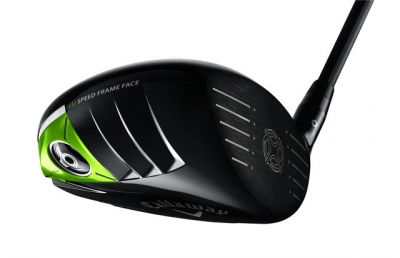 |
No joke. That thing really does work.
We didn’t get any 360-yard drives out of the club, but it was consistently longer and straighter than most of the drivers we’ve tried recently, and we can therefore recommend the club. As always, try it for yourself – that’s the only way you can discover the difference.
At the same time we tried the RAZR Fit Xtreme, we also previewed the X Hot Fairway Woods, which Callaway claims is “longer from everywhere.” The company goes further in boasting that the XHot is the longest fairway woods ever.
That’s a lot to live up to.
Again, Williams provides the details: “There are a lot of design elements that make the X Hot Fairway Wood so hot. One that I'll call out is the Forged Speed Frame Face Cup, which is made of high strength Carpenter 455 stainless steel that is up to 40 percent thinner than last year’s fairway wood face. We made a huge leap this year in FW technology.”
He continues, “The X Hot FW also had a 90 percent larger sweet spot than its predecessor, putting the CT level right up against the limit allowed by the USGA.”
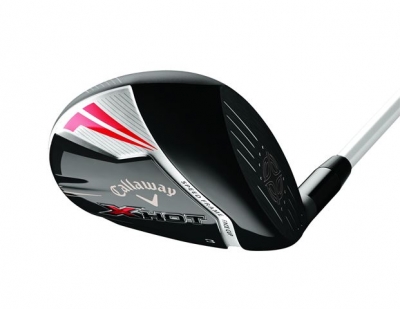 |
“What does this mean for the golfer? The Forged Speed Frame Face Cup produces significantly hotter responses all over the face, and it does it with excellent launch conditions from the tee, the fairway and the rough.”
It’s so hot that Phil Mickelson employed an X Hot 3-wood at the U.S. and British Opens as his driver. Mickelson also used the X Hot to hit what will probably go down as the most famous shot of 2013, his second shot to Muirfield’s par five 17th hole during his legendary final round.
One thing the X Hot is not, is adjustable (the RAZR Fit Xtreme fairway wood comes with an adjustable hosel, so the company does make a fairway model with adjustability).
Williams explains why: “We look at our fairway woods line and want to offer various options within the line. You do make some sacrifices when adding an adjustable hosel given the weight and what not, so we are always balancing what will give golfers the best performance.”
Fair enough. After all, golfers are always welcome to try different models and manufacturers and select what’s best for them.
Callaway welcomes the comparisons, too. “We encourage golfers to get out there and try these against the competition. The face cup, the low CG, and the versatile sole make this fairway wood an awesome choice for distance from everywhere on the course,” Williams said proudly.
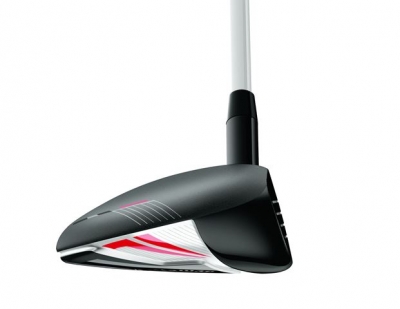 |
Like with the RFX driver, we also enjoyed the X Hot fairway wood – though it took some time to get used to it. It feels quite a bit lighter than others we’ve tried recently, and looks a little closed at address. We were able to even things out by playing the ball a little further back in the stance, which straightened it out.
And there’s no question about the distance. Wow. We don’t measure with tape, but you won’t be disappointed. Again, try it for yourself.
With these products, it’s clear that Callaway is moving the needle on technology – and promises to continue to do so.
But is technology changing the game in a bad way?
Williams says no. “The sport has seen constant advances in technology throughout its history. We are driven every day to develop clubs that make the great game of golf more enjoyable and to help players perform their best.”
It’s hard to argue. The Callaway RAZR Fit Xtreme driver and the X Hot fairway woods go a long way towards doing just that.
Details:
Callaway Golf’s RAZR Fit Xtreme driver and X Hot fairway woods
Available at your higher-end golf retailers and club pro shops.
Check out more information about Callaway Golf products at:
http://www.callawaygolf.com/global/en-us/golf-equipment.html
Check the website for locations to demo and purchase products.
| Related Links | Comments on this article? | |
|
Maryland National Golf Club Hollow Creek Golf Club Rocky Gap Resort PB Dye Golf Club in Ijamsville Whiskey Creek Golf Club |
E-mail Jeff Rendall, Editor: jrendall@golftheunitedstates.com |











